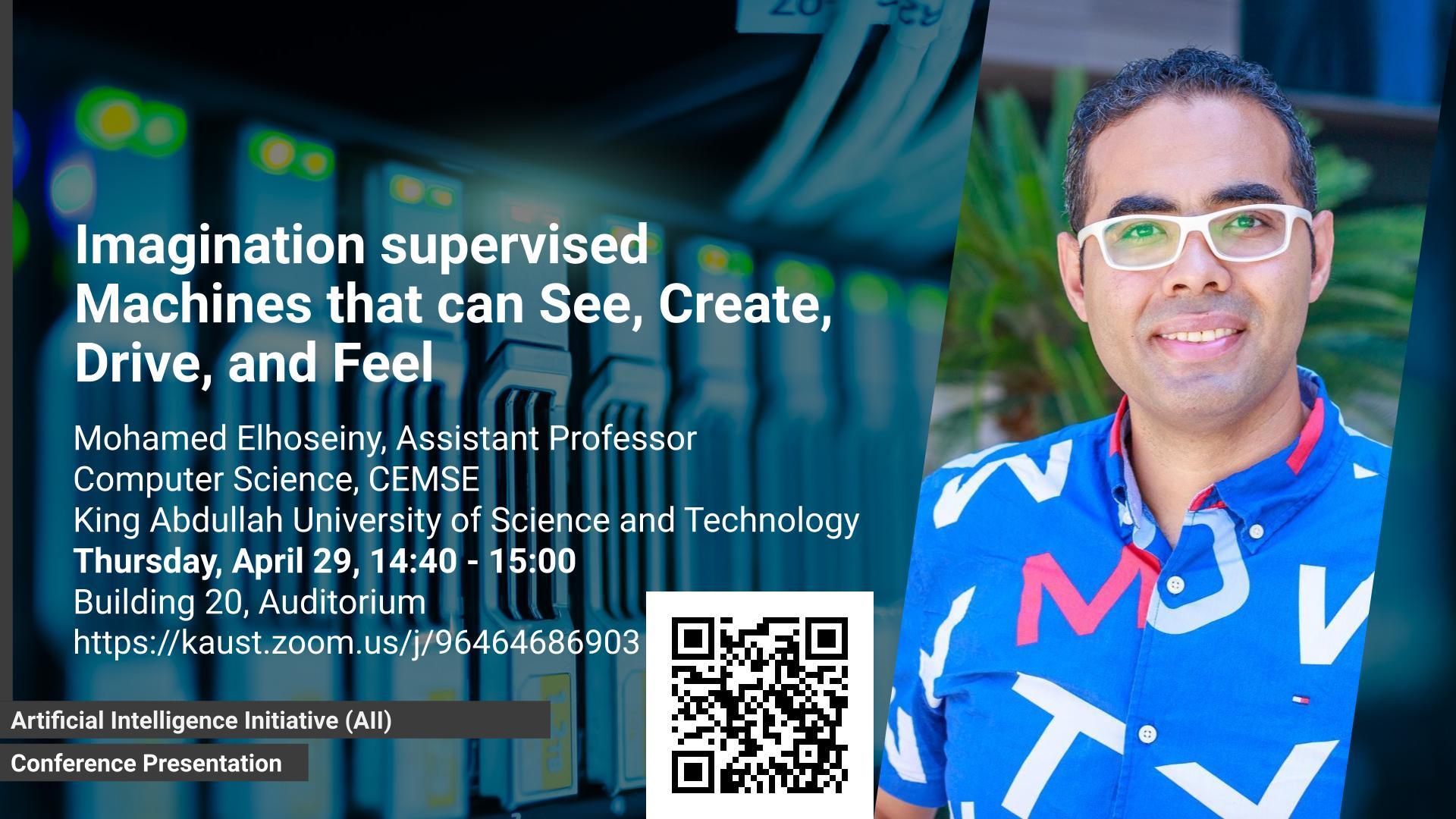Abstract
Most existing learning algorithms can be categorized into supervised, semi-supervised, and unsupervised methods. Most of these approaches rely on defining empirical risks or losses on the provided labeled and/or unlabeled data. In this talk, we will reflect on a class of methods that goes beyond labeled/unlabeled training data, improving task performance by either raw or latent imaginary data. We refer to this class of techniques as imagination supervised learning, and we will dive into how we developed several approaches to build machine learning methods that can See, Create, Drive, and Feel. See: recognize unseen visual concepts by imaginative learning signals. Create: generate novel art and fashion by creativity losses. Drive: improve trajectory forecasting for autonomous driving by modeling hallucinative driving intents. Feel: generate emotional descriptions of visual art that are metaphoric and go beyond grounded descriptions.
Brief Biography
Mohamed Elhoseiny is an assistant professor of Computer Science at KAUST. Previously, he was a visiting Faculty at Stanford Computer Science department (2019-2020), Visiting Faculty at Baidu Research (2019), Postdoc researcher at Facebook AI Research (2016-2019). Dr. Elhoseiny did his Ph.D. in 2016 at Rutgers University where he was part of the art & AI lab and spent time at SRI International in 2014 and at Adobe Research (2015-2016). His primary research interest is in computer vision and especially in efficient multimodal learning with limited data in zero/few-shot learning and Vision & Language. He is also interested in Affective AI and especially to understand and generate novel visual content (e.g., art and fashion). He received an NSF Fellowship in 2014, the Doctoral Consortium award at CVPR’16, best paper award at ECCVW’18 on Fashion and Design. His zero-shot learning work was featured at the United Nations and his creative AI work was featured in MIT Tech Review, New Scientist Magazine, Forbes Science, and HBO Silicon Valley. He is serving as Area Chair at CVPR21 and ICCV21 and organized CLVL workshops at ICCV’15, ICCV’17, ICCV’19, and ICCV’21

